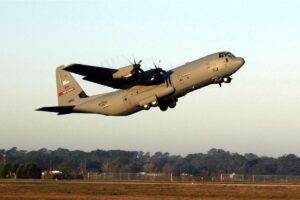Efficient SERIAL to MIL-STD-1553 Protocol Conversion
The MIL-STD-1553 data bus standard, originally developed for military avionics systems, continues to be a cornerstone of defense and aerospace communications. However, the rise of modern serial communications protocols such as RS-232, RS-422, and RS-485 presents a challenge when attempting to integrate these devices into legacy 1553-based infrastructures. This white paper explores methods, technologies, and design principles for achieving seamless SERIAL to MIL-STD-1553 protocol conversion. It emphasizes interoperability, minimal latency, electrical compatibility, and adherence to stringent aerospace and defense standards.
- Introduction
- Understanding MIL-STD-1553
- Overview of SERIAL Protocols
- Technical Challenges in Protocol Conversion
- Architecture of a SERIAL to MIL-STD-1553 Converter
- Key Design Considerations
- Case Study: Avionics Integration
- Electrical and Timing Considerations
- Software Implementation
- Testing and Validation
- Compliance with Aerospace Standards
- Commercially Available Solutions
- Emerging Trends and Future Outlook
- Summary and Recommendations
- References
- Appendix A: Data Frame Structures
Legacy military systems often rely on the MIL-STD-1553 standard for its deterministic and fault-tolerant communication capabilities. However, with an increasing variety of sensors and subsystems designed with serial interfaces, the need for reliable protocol conversion becomes critical. SERIAL to MIL-STD-1553 converters bridge this gap, enabling cost-effective modernization without complete system overhauls.
MIL-STD-1553 is a time-division multiplexed serial data bus that provides deterministic communication for critical subsystems. Key features include:
- 1 Mbps data rate
- Dual-redundant bus topology
- Use of a Bus Controller (BC), Remote Terminals (RTs), and a Bus Monitor (BM)
- Command/response protocol
The protocol ensures robust and predictable performance under extreme conditions, making it indispensable in military and aerospace environments.
Serial protocols are simple, widely adopted, and suited for point-to-point communication. The most common types are:
- RS-232: Single-ended, full-duplex, used for short-distance communication
- RS-422: Differential signaling, supports higher speeds and longer distances
- RS-485: Multi-drop capability, suitable for complex systems
These protocols are not inherently deterministic or fault-tolerant, unlike MIL-STD-1553, which creates challenges during integration.
Bridging SERIAL and MIL-STD-1553 requires overcoming several hurdles:
- Electrical Compatibility: Voltage levels and signaling types differ.
- Timing Mismatch: Synchronization is essential due to 1553’s strict timing.
- Frame Structure Differences: Packet formatting must be translated accurately.
- Error Handling: SERIAL interfaces lack robust error correction schemes.
- Determinism: Ensuring timing determinism during conversion.
A typical converter includes:
- Serial Interface Module: Handles RS-232/422/485 input/output.
- 1553 Interface Module: Manages BC/RT/BM roles.
- Protocol Engine: Translates messages between formats.
- Microcontroller or FPGA: Executes control logic and scheduling.
- Memory Buffers: Temporarily store incoming/outgoing data.
Diagrammatic representation (not shown) typically illustrates signal flow from SERIAL device through conversion logic to MIL-STD-1553 bus.
When designing a converter, important factors include:
- Latency Minimization: Essential for real-time systems
- Data Integrity: CRC and parity checks
- Power Consumption: Especially in embedded systems
- Environmental Hardening: Shock, vibration, EMI resistance
- Redundancy Management: Ensuring bus failover support
In a recent aircraft retrofit program, a SERIAL sensor network needed to communicate with a 1553-based mission computer. A custom converter was designed with the following features:
- Multi-channel SERIAL input
- Intelligent message filtering
- Redundant 1553 bus interface
- FPGA-based protocol engine
This solution avoided requalification of the entire avionics suite, saving significant cost and time.
Signal conversion must address:
- Level Shifting: RS-232 operates at ±12V, while 1553 uses differential 18-27V
- Clock Synchronization: Necessary for message timing
- Cable Impedance Matching: To avoid signal reflection
Bus controller scheduling must account for SERIAL device response times.
Firmware or embedded software manages:
- Command Translation: Mapping SERIAL instructions to 1553 command words
- Interrupt Handling: Prioritizing time-sensitive messages
- Buffer Management: Preventing data overflow
- Protocol Stack Implementation: Adhering to RT/BC/BM specifications
Real-time operating systems (RTOS) or bare-metal designs are often used.
Critical steps include:
- Loopback Testing: Ensures signal path integrity
- Bit Error Rate Testing (BERT): Validates communication quality
- Environmental Testing: Confirms operation under temperature, vibration, EMI
- Conformance Testing: Verifies adherence to MIL-STD-1553
Automated test scripts simulate both SERIAL and 1553 traffic to verify converter behavior.
MIL-STD-1553 compliance is non-negotiable in defense applications. Additional standards include:
- DO-160: Environmental conditions and test procedures
- DO-178C: Software development assurance
- DO-254: Hardware development assurance
- MIL-STD-461: EMI/EMC compliance
Converter systems must meet these to be flight-certified.
Several vendors offer off-the-shelf converters:
- Data Device Corporation (DDC): Feature-rich modules
- Alta Data Technologies: High-performance PCIe and cPCI cards
- GE Intelligent Platforms: Rugged, embedded solutions
- Ballard Technology (Astronics): USB-based adapters
Customization options allow adaptation to specific program needs.
Key trends shaping future converter designs:
- Miniaturization: Smaller, lighter converters
- Increased Integration: Combining protocol conversion with data logging
- AI/ML for Predictive Diagnostics: Enhancing converter reliability
- Cybersecurity: Securing protocol bridges against spoofing or tampering
As military platforms adopt hybrid architectures, protocol conversion becomes central to interoperability.
Integrating SERIAL devices into MIL-STD-1553 systems is a practical and often necessary step in modernizing defense platforms. Key takeaways:
- Understand both protocols deeply before attempting conversion.
- Address electrical, timing, and protocol translation challenges.
- Choose or design converters that are standards-compliant and environment-hardened.
- Validate thoroughly through testing and simulation.
With the right converter, legacy and modern systems can coexist reliably and efficiently.
- MIL-STD-1553B Standard, U.S. Department of Defense
- RTCA DO-160G, Environmental Conditions and Test Procedures for Airborne Equipment
- RTCA DO-178C, Software Considerations in Airborne Systems
- RTCA DO-254, Design Assurance Guidance for Airborne Electronic Hardware
- IEEE 802.3, Ethernet Standards (for comparison)
- DDC, Technical Documentation on MIL-STD-1553 Converters
- Ballard Technology White Papers
- SERIAL Frame: Start bit, data bits (7/8), parity, stop bit
- MIL-STD-1553 Frame:
- Command Word (16 bits)
- Data Word(s) (16 bits each)
- Status Word (16 bits)
Conversion logic maps SERIAL data into 1553 data words, with padding and formatting where necessary.





